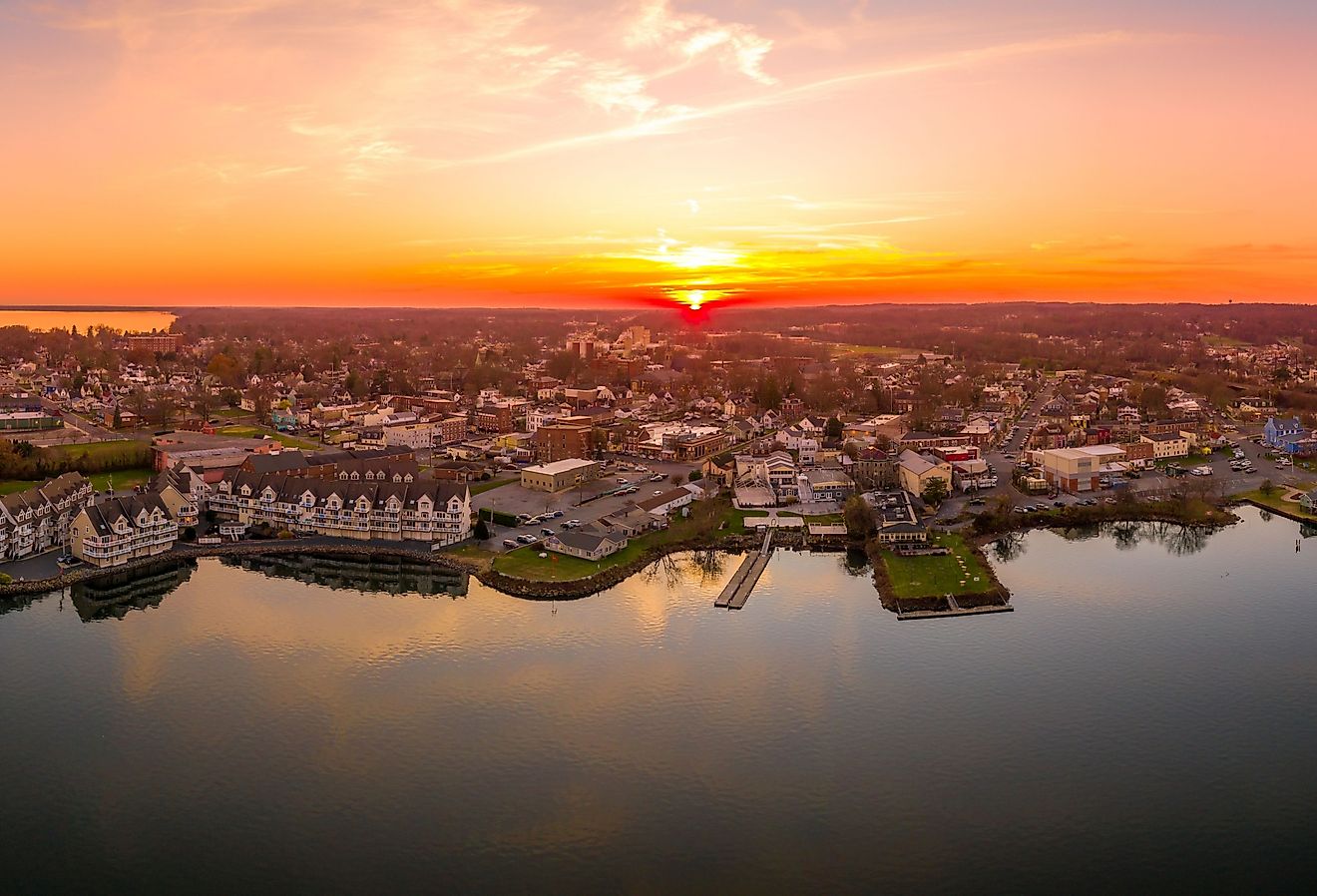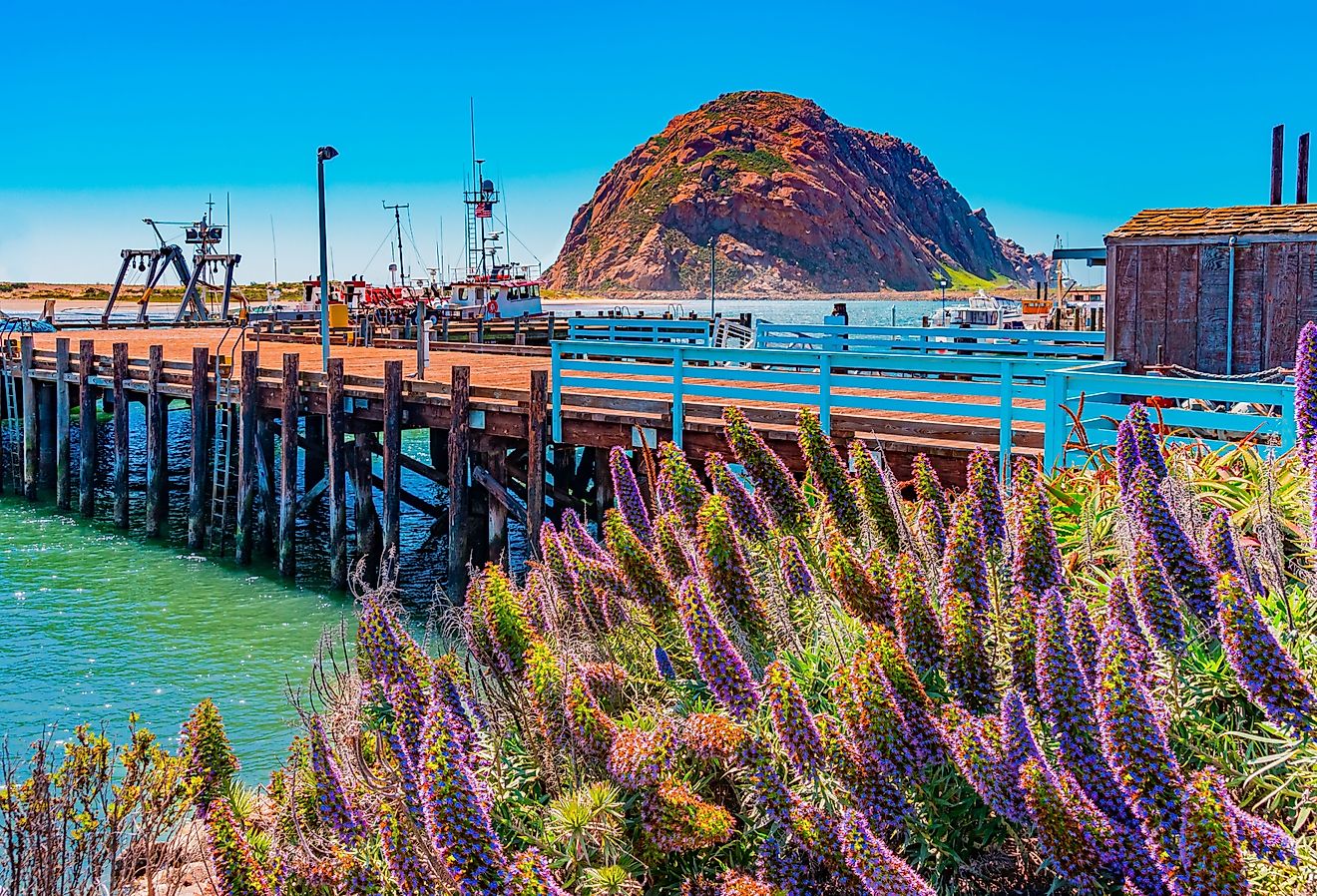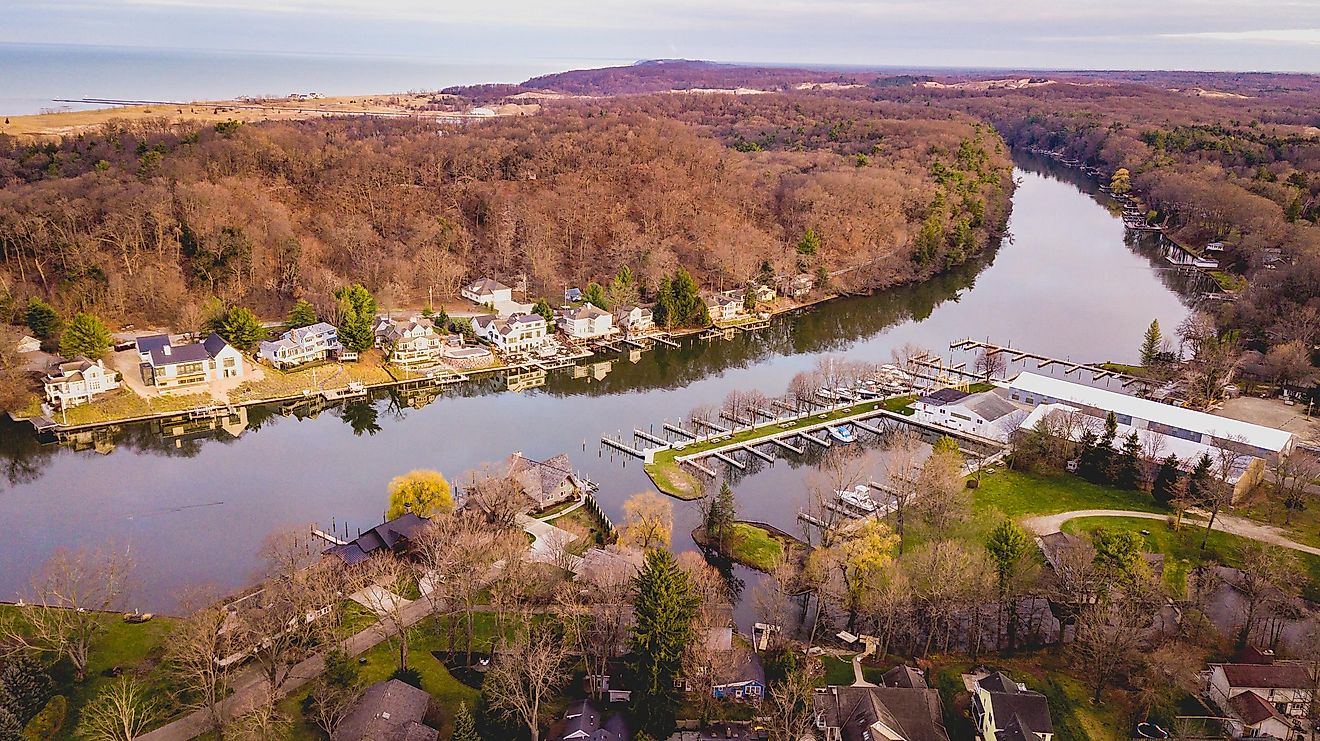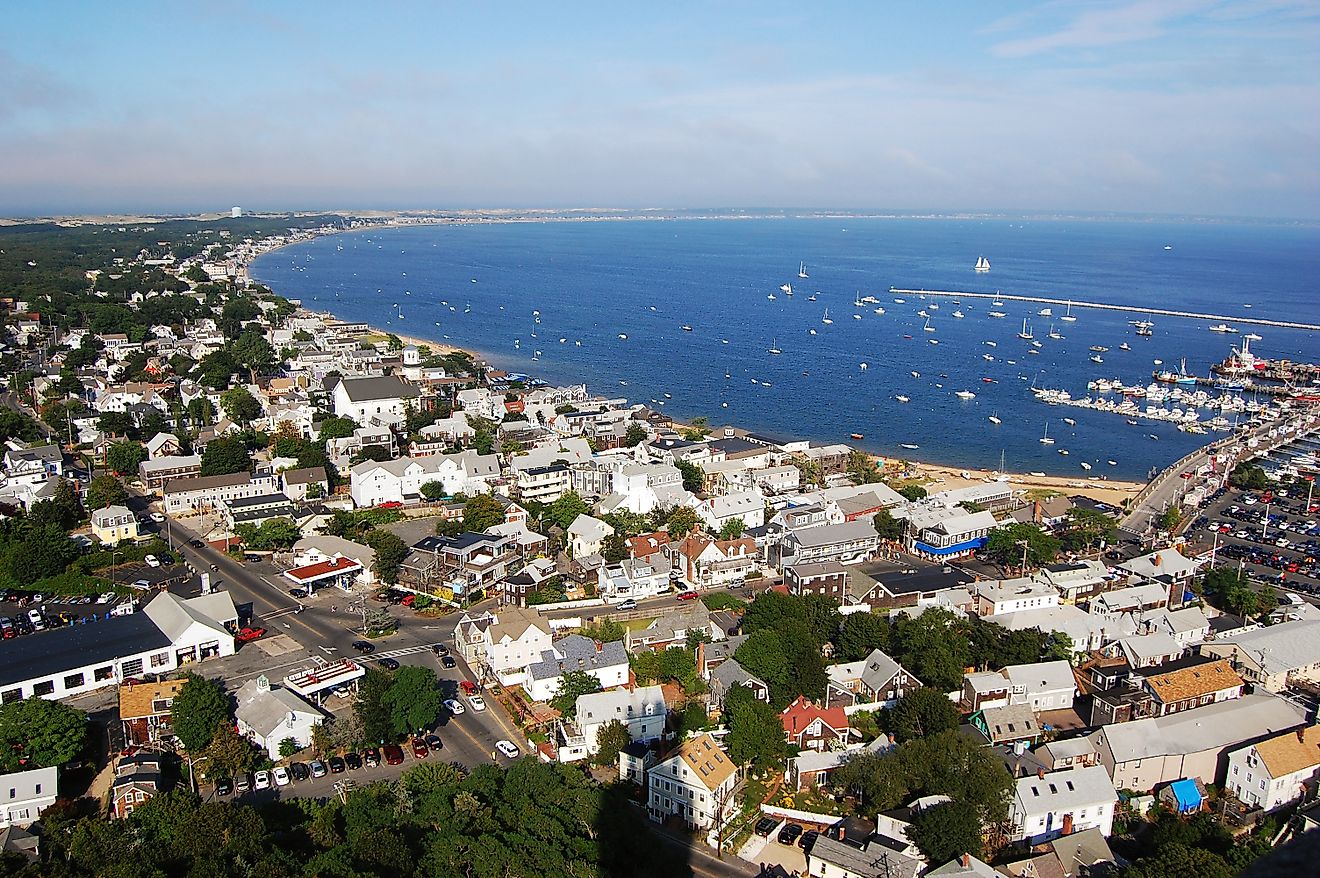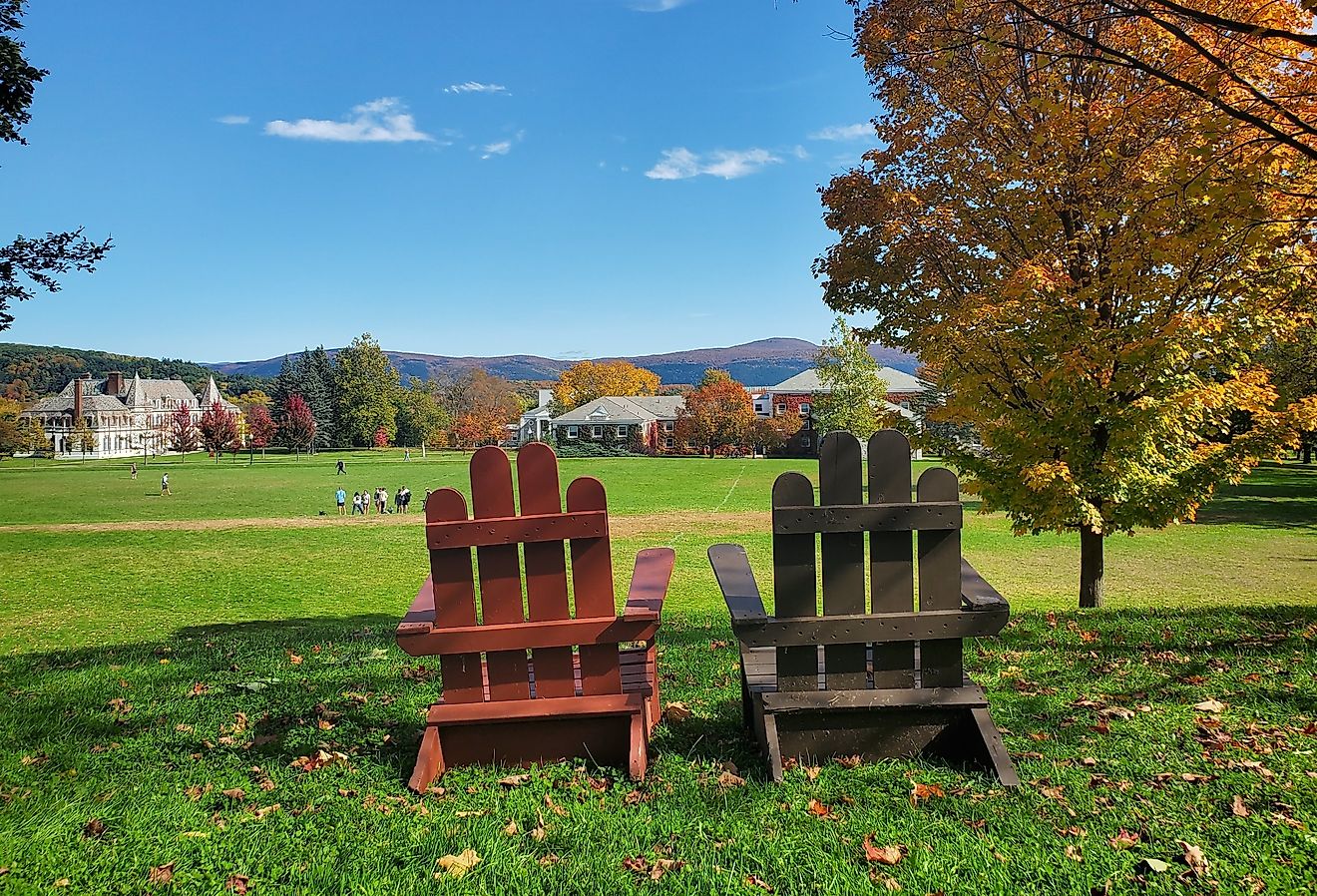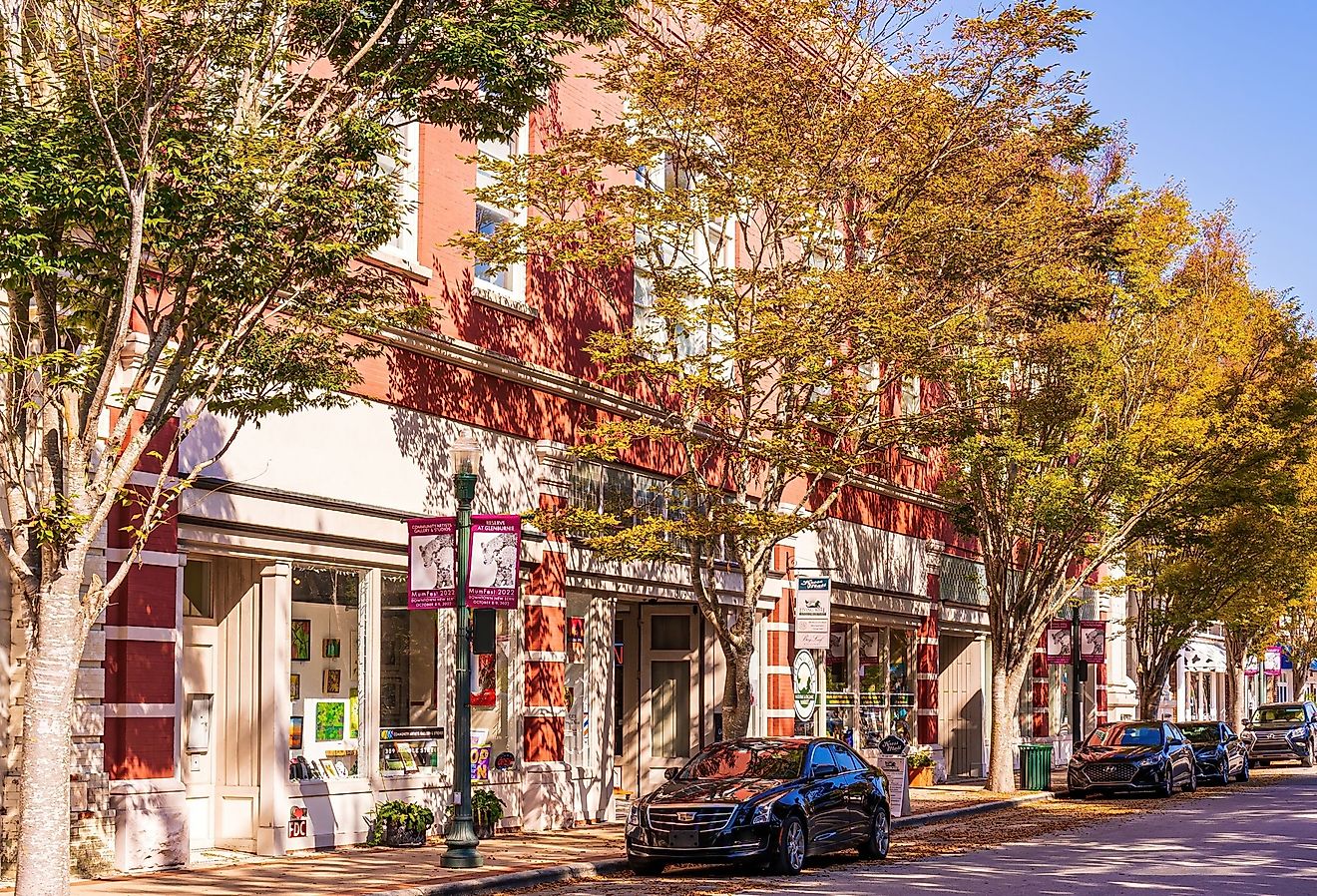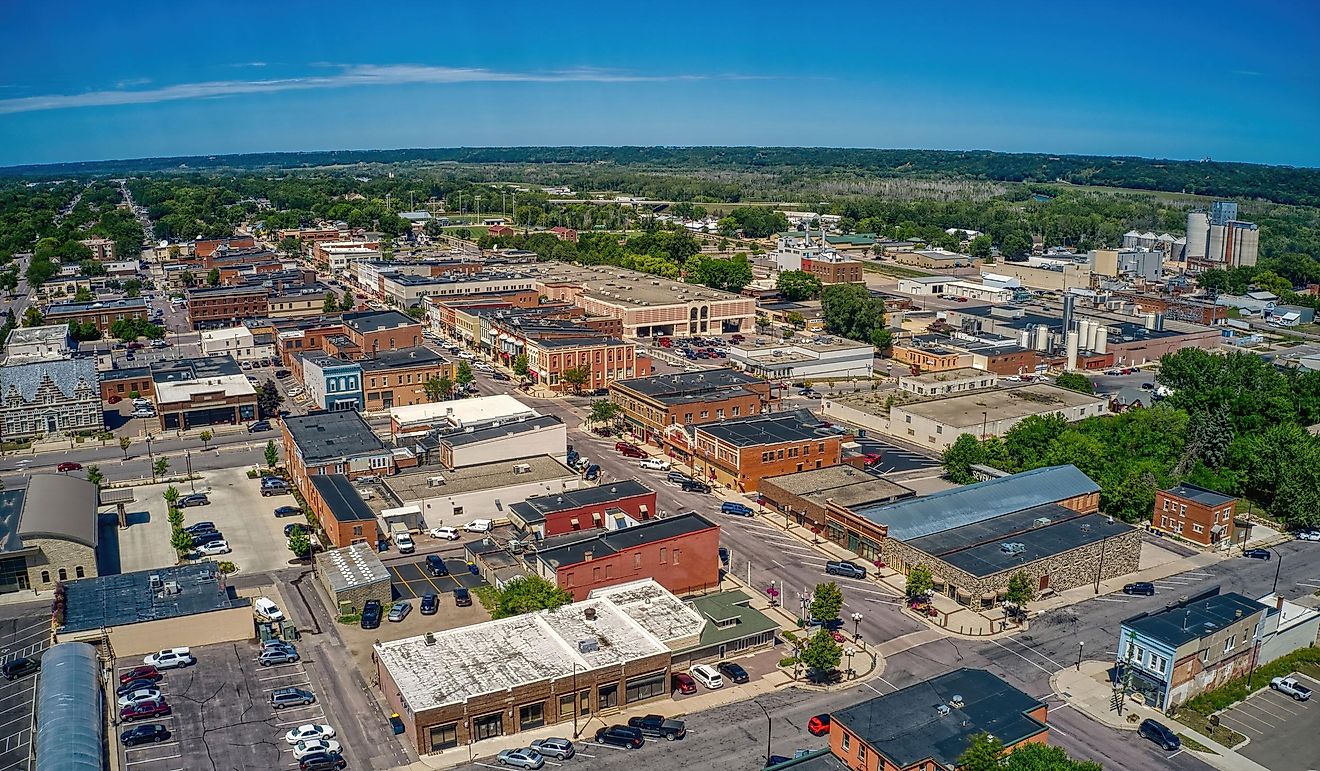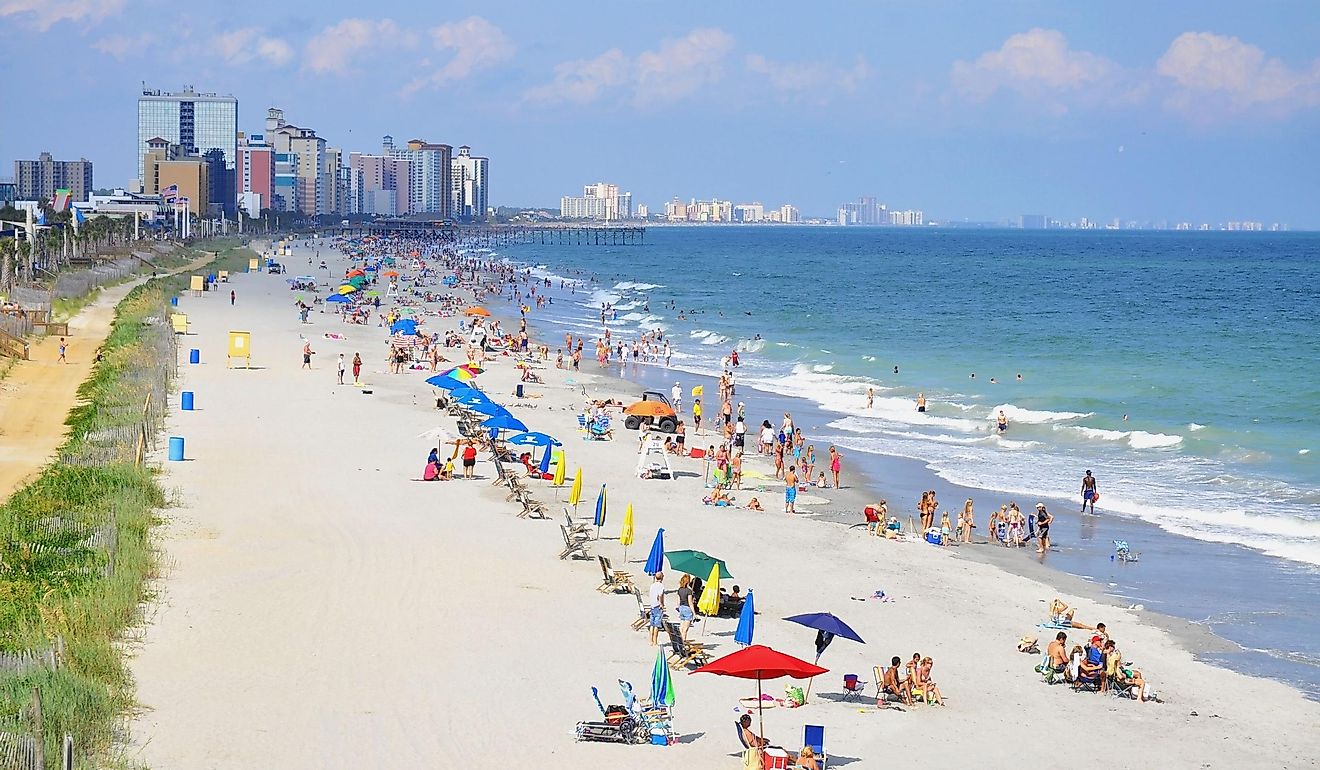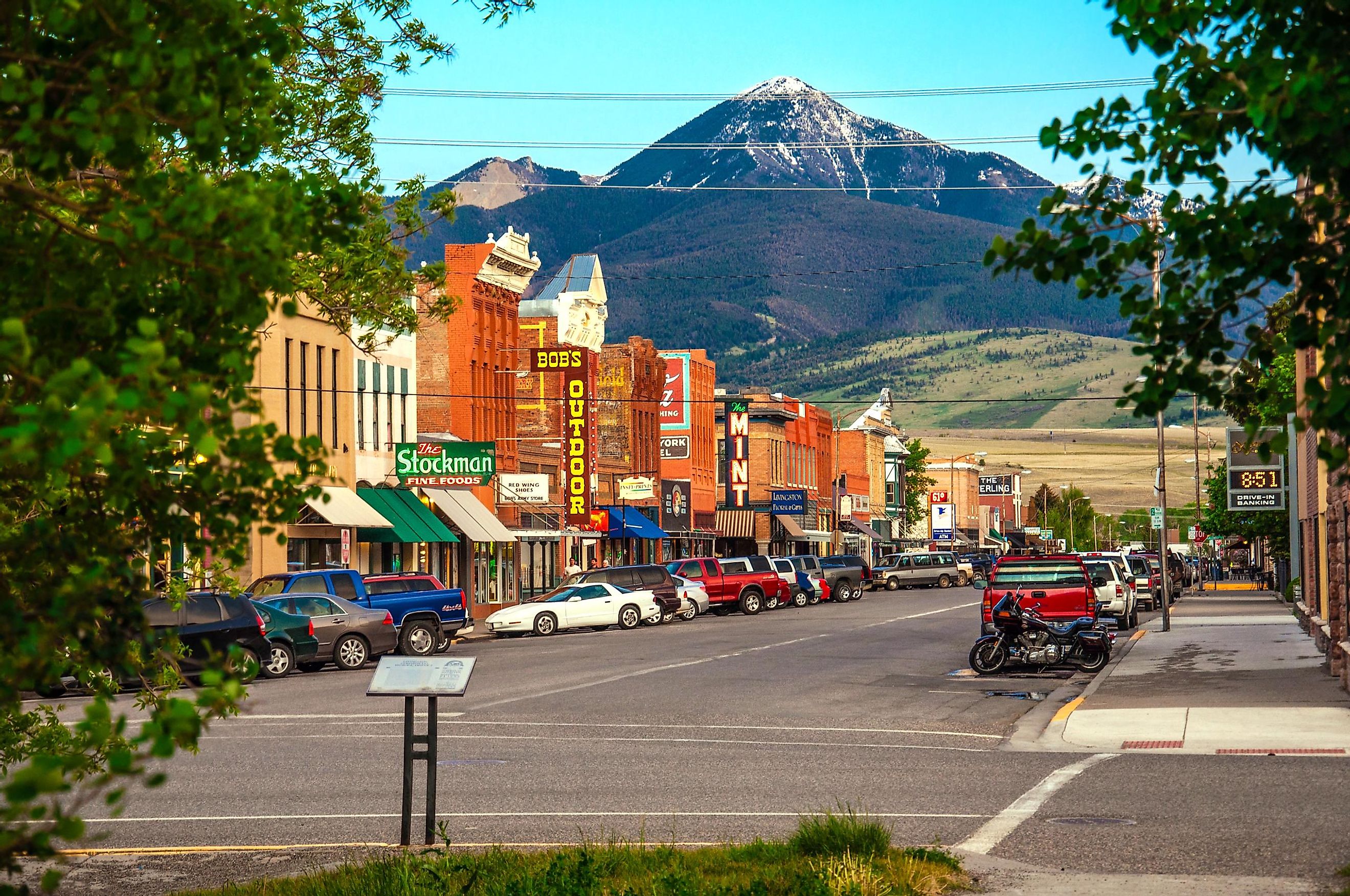
8 Most Vibrant Towns In The Northern United States
When people think about vibrant towns in the USA, places in the southern states usually leap to mind. Traditionally, the beachside communities of Florida, Southern California and North and South Carolina, blessed with ample sun and warm, inviting climates, tend to capture the public's imagination as the most desirable vacation destinations in the country. However, although these southern locales may have an advantage when it comes to the common perception of vibrancy, in truth, there are many towns in the northern United States that rival them.
Spread throughout the breadth of the continent, these bustling communities north of the Mason–Dixon Line emblemize the appeal of small-town America through their natural beauty, their vivacious commercial districts, and their thought-provoking cultural and historical sites.
Marquette, Michigan
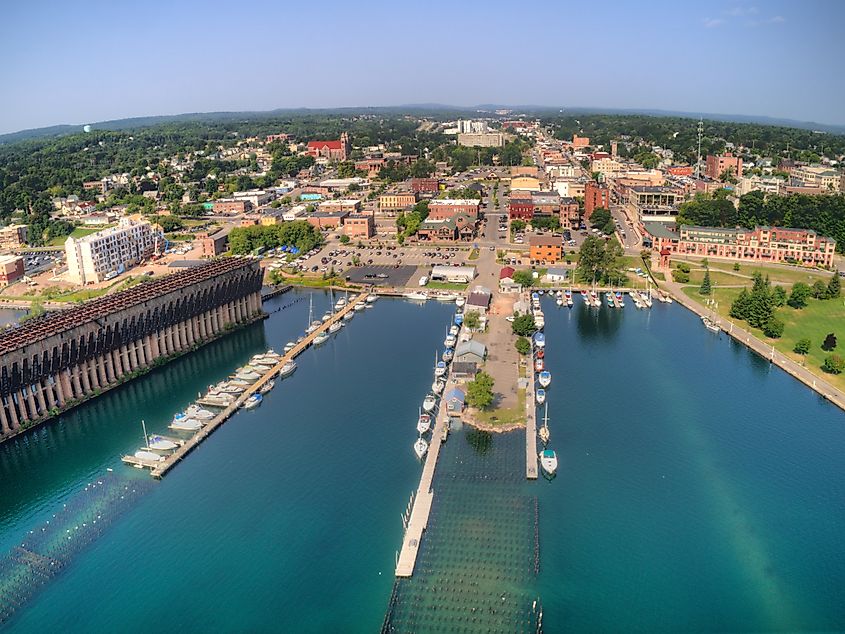
The Upper Peninsula of Michigan—affectionately known by locals as "The UP"—is physically separated from the lower portion of the state by Lake Michigan. The region is renowned for its rugged scenery and rustic lifestyle and boasts a plethora of forests, lakes, rivers, waterfalls, and islands.
With a modest population of 20,629, Marquette is the largest town in The UP, which is indicative of the vast open spaces that surround it. It is also the seat of Marquette County. Situated on the southern shores of Lake Superior just across the water from Canada, the town is a perfect vacation spot for anyone who loves to camp, fish, hunt, or sail in the summer months, as well as anyone who likes to sled, skate, snowmobile, or ice fish in the winter months. Its trails are legendary in hiking circles, with Sugarloaf Mountain Trail, Hogsback Mountain Trail, and North County Trail among the most popular. Presque Island Park is another star attraction. With its welcoming waters, the park is a haven for those who enjoy aquatic sports, such as paddle-boarding, kayaking, or canoeing, and its pebble beaches provide an excellent setting for picnicking. Located within city limits, McCarty's Cove is a beach in the classical sense, and during June, July, and August, it is invariably packed with people swimming, playing in the sand, and soaking up the summer sunshine.
But Marquette's appeal is not limited to outdoor activities. Some local businesses that never fail to impress visitors include Lawry's Pasty Shop, Zephyr Wine Bar, The Vierling Brewery and Pub, Velodrome Coffee Company, Snowbound Books, and Iron Bay, a lakeside gourmet restaurant operating out of a building originally constructed in 1872 that used to house the Iron Bay Foundry.
Seward, Alaska
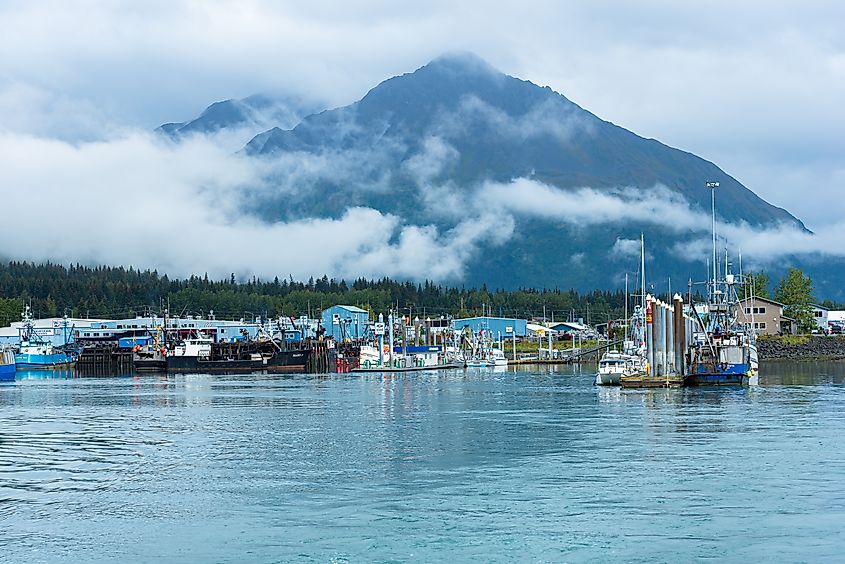
Named after former Secretary of State William Henry Seward (a member of Abraham Lincoln's cabinet and the man who negotiated the purchase of Alaska from the Russian Empire), Seward, Alaska, began as a joint Russian–American fur trading post in 1793. Geographically, the town is perched on the shores of Resurrection Bay, which is a fjord on the Gulf of Alaska and buttressed by the Kigluaik Mountains, Bendeleben Mountains, Darby Mountains, and York Mountains, creating a splendorous backdrop.
These days, Seward is a community scarcely larger than 2,700 souls and serves as a noteworthy commercial fishing center and tourism hub. One of the major points of interest in the town is the Alaska SeaLife Center, a wildlife research and rehabilitation institute open to the public that features live harbor seals, puffins, sea otters, sea lions, and octopuses. Seward also contains the Seward Museum, which showcases the town's development from its early trading post days until the present. Some exhibits in the museum focus on Seward's role as a naval port during World War 2, the effects of the disastrous Good Friday earthquake of 1964, and how the town dealt with the notorious Exxon–Valdez oil spill of 1989. Seward is also renowned as the 'Mural Capital of Alaska' due to the thirty-plus large murals prominently displayed throughout its downtown, most of which depict Alaskan scenery and native wildlife.
But perhaps the main tourist draw in Seward is its proximity to Kenai Fjords National Park. Encompassing over 587,000 acres of pristine Alaskan wilderness, the park is home to a massive conflagration of glaciers, which together form Harding Icefield. Visitors, if they are hearty and brave enough, can take hikes guided by park rangers along the Harding Ice Field Trail, which ascends more than 1,000 feet over four miles and culminates in a panoramic view over the bulk of the ice field. Seward Harbor is also the embarkation point for many day cruises and whale-watching excursions around Kenai Fjords National Park.
Nantucket, Massachusetts
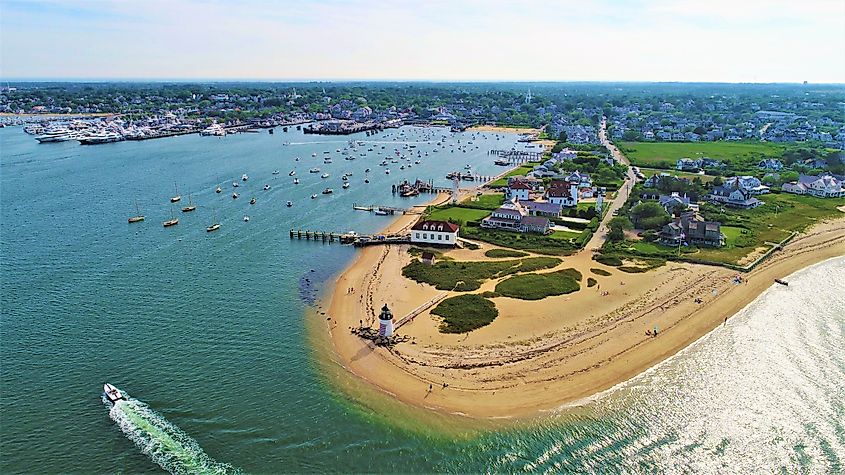
Nantucket is an island community resting about thirty miles off the Massachusetts mainland. It is what's known as a summer colony, meaning that although its officially documented population is 11,327, during the warmer months, it can balloon up to 80,000 people, counting part-time summer residents and tourists.
Aside from its romantic boardwalks and delicious local seafood restaurants, Nantucket is famous for its lighthouses, which makes a great deal of sense considering its position as one of the outermost New England islands in the Atlantic Ocean. Each year, visitors flock to Brant Point Lighthouse, Sankaty Head Lighthouse, and Great Point Lighthouse, each over 150 years old. Though mostly tourist attractions now, these lighthouses were originally erected to guide ships around the treacherous rocks and sandbars that encircle portions of the island. It is an unfortunate fact that more than 700 ocean-going vessels have sunk off Nantucket's coastline over the centuries—so many that the Nantucket Shipwreck and Lifesaving Museum was built to document and honor the stories of these ships and their sailors. Much in the same vein, the island is also home to the storied Whaling Museum, which houses portraits, models, and artifacts pertaining to what was once the island's primary industry. The Whaling Museum is governed by the Nantucket Historical Association, whose purview also includes six other sites crucial to understanding Nantucket's past.
Beyond its maritime history, the island community has a thriving cultural scene, as well. Both White Heron Theater Company and On The Isle provide a wide variety of theatrical productions each season, while the Nantucket Musical Arts Society consistently hosts world-class musical performances. For lovers of all things libatious and gastronomic, Cisco Brewers is a local hot spot, offering tours, wine and spirits made on-site, and a wide variety of edible local delicacies.
Livingston, Montana
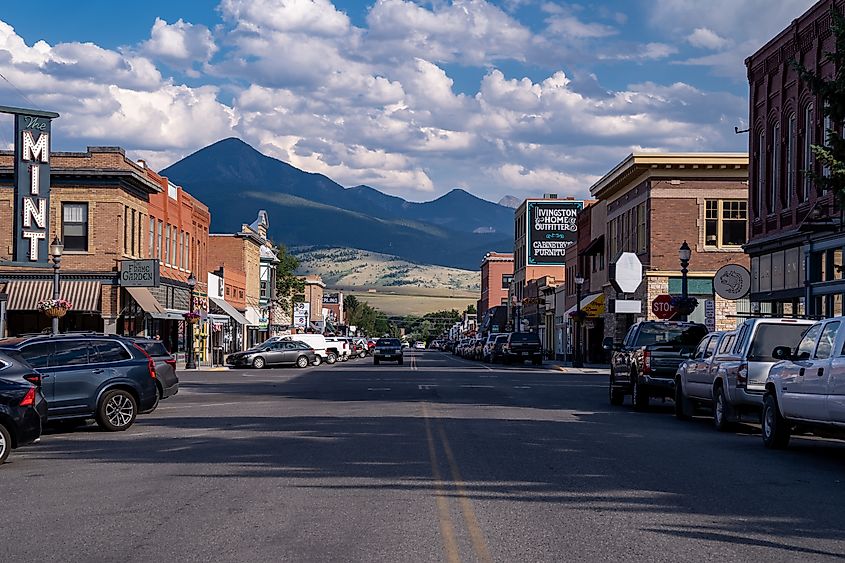
Since its admission into the Union, Montana's status as one of the most scenic states has never been in doubt. Its awe-inspiring mountains, rolling plains, graceful buttes, and crystal-clear rivers continually attract and inspire visitors from all over the world. Within the state, many townships can reasonably claim to capture the essence of Montana's vibrancy, but none more so than Livingston.
Placed in the southwest portion of Montana along the Yellowstone River, Livingston is an 8,040-strong community whose creation was a direct result of the Northern Pacific Railway. Once tracks were laid in this area, the site became an important point for railroad servicing along the Rocky Mountain corridor, ultimately spawning multiple machine shops and engineering stations. As time passed, railway workers built residences and founded new businesses, and the town of Livingston was born.
Even though it is far from what one might call a metropolitan center, Livingston punches above its weight when it comes to drawing tourists. Chief among the reasons why is its gorgeous setting. The whole town basks in the shadow of the Livingston Mountain Range. Kintla Peak, Kinnerly Peak, Rainbow Peak, Mount Carter, Vulture Peak, Chapman Peak, and The Guardhouse are all visible from within city limits. Indoor experiences abound, as well. The Livingston Depot is a fully restored, turn-of-the-century railway station and museum which is both educational and family-friendly. The Yellowstone Gateway Museum is an all-encompassing historical institute documenting all eras of the region's history, from some of the oldest known North American archaeological dig sites to exciting exhibits about the Wild West. Picturesque Sacajawea Park is only a short jaunt from downtown Livingston, so named to commemorate a rendezvous made by the Lewis and Clark Expedition with their Native American guide in 1805. The park is ideal for hiking, picnicking, or simply observing the local flora and fauna.
The town is also a veritable Mecca for fly-fishing enthusiasts. Those who have been lucky enough to cast their lines into the Yellowstone River say it has some of the best angling action in the world. Adding to that, Livingston is also home to a museum commissioned and operated by the International Fly Fishing Federation, the Fly Fishing Discovery Center.
Bayfield, Wisconsin
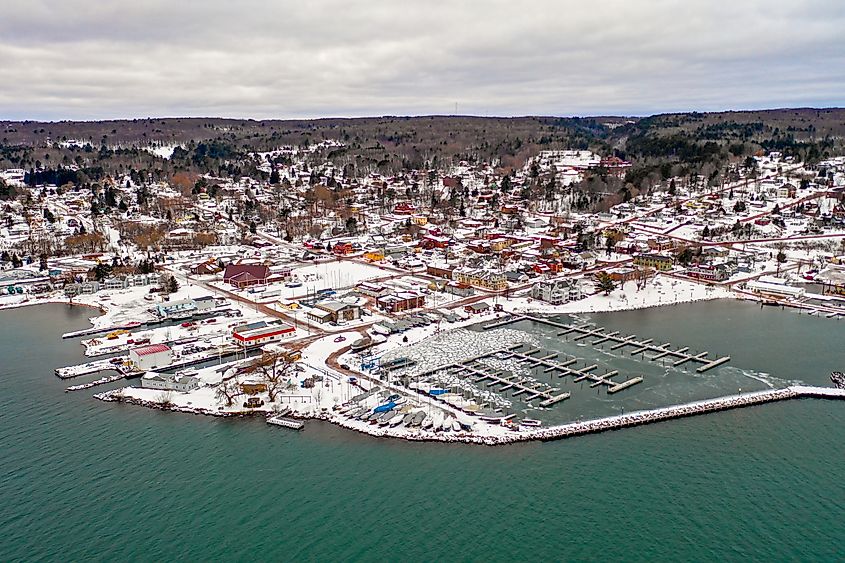
Bayfield, Wisconsin, might take the prize for the most cozy-yet-vibrant small town in the entire Midwest. It is also the smallest incorporated township in Wisconsin, posting an official population of merely 584. Referred to by locals as "Gateway to the Apostle Islands" due to its placement as the last mainland settlement before the eponymous Lake Superior archipelago, Bayfield is often listed by travel periodicals as one of the best places to visit in the United States. It's easy to understand why; for such a tiny burgh, it has so much to see and do.
Visitors usually opt to book themselves into one of the town's several highly rated bed and breakfasts, such as Old Rittenhouse Inn or Pinehurst Inn. After a restful night's sleep and a tasty morning meal, options for how to spend time in Bayfield are seemingly endless. Pick berries at any one of six local berry farms, hop on a sightseeing ship around the nearby island chain courtesy of Apostle Island Cruises, sample a craft beverage at the Copper Crow Distillery (the first Native American-owned distillery in the USA), explore the miles of hiking trails across Bayfield Peninsula, play the tables at Legendary Waters Resort and Casino, or browse the artisanal wares at Eckels Pottery and Fine Craft Gallery.
For those more attracted to special events, Bayfield holds two ongoing festivals: the Concerts By the Lake series occurs every Tuesday and Thursday during summer and is totally free of charge, while Big Top Chautauqua is a year-long string of cultural and artistic events all taking place underneath a gigantic revival-style canvas tent.
Cooperstown, New York
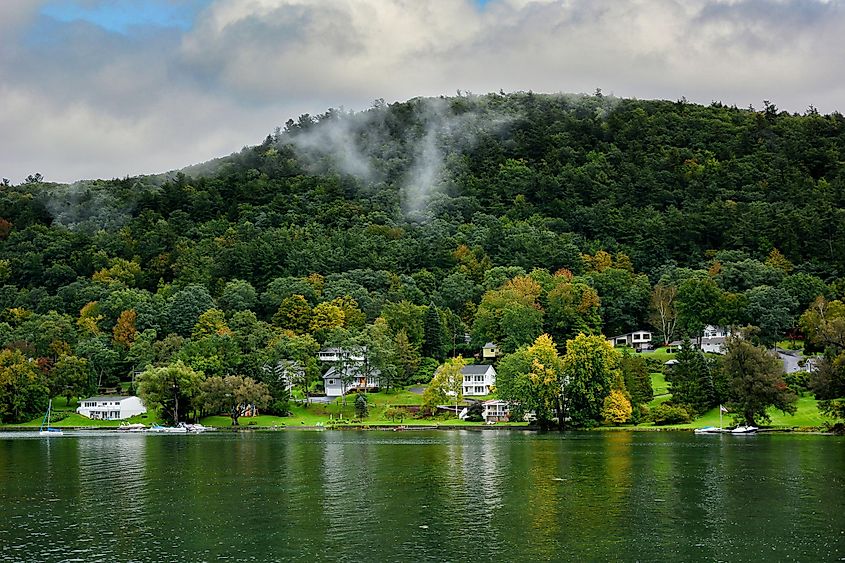
With a population of 1,794 souls, Cooperstown, New York, is little more than a village, but despite that, it has achieved international fame as the location of one of the professional sporting world's most hallowed grounds. The Baseball Hall of Fame and Museum opened in Cooperstown in 1944, ushering in a new era of tourism and prosperity for what was then a tightly-knit upstate community. An average of 260,000 fans of America's pass-time visit the Hall of Fame each year, paying homage to the greatest pitchers, fielders, and sluggers to ever play the sport. The annual ceremony for new inductees is also a significant media event, garnering Cooperstown millions of dollars of free publicity. Only two blocks away from the Baseball Hall of Fame and Museum is Abner Doubleday Field, a 9,000-seat fully functional stadium purported to be built on the same plot of land on which its namesake is credited with creating the game in 1839.
But there is more to Cooperstown than monuments to baseball. The village contains other notable landmarks, such as The Farmer's Museum, a living recreation of 19th-century rural life, and Alice Busch Opera Theatre, an astounding piece of architecture home to the Glimmerglass Festival. The festival, which was so titled as a tribute to an affectionate nickname given to nearby Lake Otsego by James Fenimore Cooper, consists of four full-scale operatic productions each year. Speaking of the author of The Last of the Mohicans, another popular tourist destination in the village is Fenimore Art Museum, a neo-Georgian mansion dedicated to the life, legacy, and art collection of James Fenimore Cooper, one of the giants of American literature and a favorite son of Cooperstown. Indeed, the town itself derives its name from the author's father, William, the very man who founded the settlement in 1786.
Stillwater, Minnesota
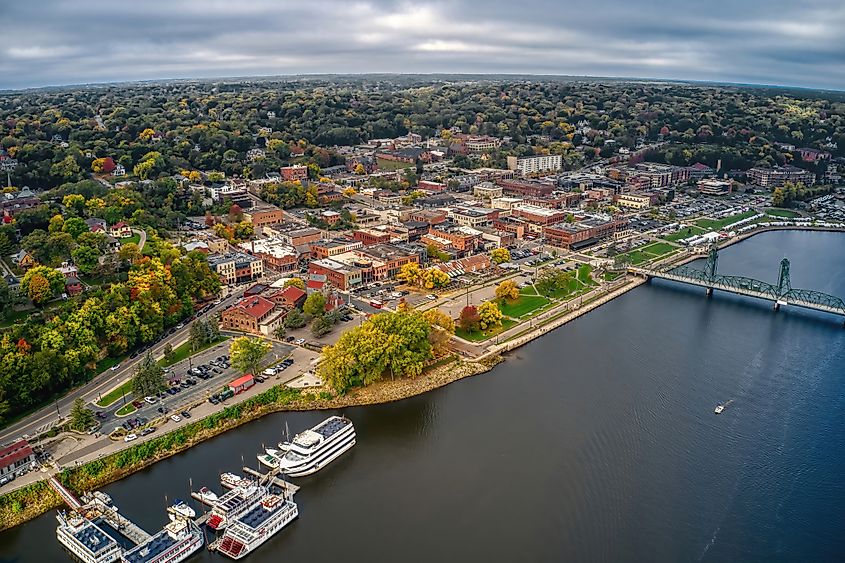
One of The North Star State's oldest settlements, the town of Stillwater is sometimes called "the birthplace of Minnesota" in deference to its major role in its achievement of statehood. In 1848, a territorial convention was held here, which started the process of decoupling Minnesota from the Wisconsin territory, later culminating in Minnesota's admission to the Union. At this same convention, the state's founding fathers chose three cities to host institutions that would later shape Minnesota's future: St. Paul as the capital and legislative seat, Minneapolis as the home city of the state university, and Stillwater itself as the site of the state's first prison. As a result of these and other important events, Stillwater is federally recognized by the Advisory Council on Historic Preservation as an official Preserve America Community, and its Main Street area is nationally registered as the 'Stillwater Commercial Historic District.'
Putting aside its pivotal place in Minnesotan history, in the present day, the town of 19,394 people virtually hums with vibrance. It is the undisputed nexus of culture in the St. Croix River Valley, boasting many innovative art studios and galleries like Marquess Studios, Union Art Alley, Off the Wall Studios, and Art Reach St. Croix. The Zephyr Theater opened in 2018 and quickly became a mainstay in the Stillwater community through its diverse program of stage plays, musical productions, jazz concerts, and interactive experiences. The town also has a burgeoning music scene, with more than fifteen clubs and live venues scattered throughout. Of these, The Tilted Tiki, Portside, PD Paddy's, and Ziggy's are generally thought to be the most trend-setting and influential.
But perhaps the best way to become acquainted with Stillwater is by taking one of the town's five major guided walking tours. The Rivertown Tours company takes a broad, overall view of the town, while the Historic Downtown Walking Tour focuses more on locales that bore witness to its formative events. For those with an interest in building design, the Historic South Hill Homes Walking Tour takes a decidedly architectural slant, while the Stillwater Cultural Landscape District Tour hones in on a more detail-oriented exploration of the town's old infrastructure. And, of course, there is Stillwater Ghost Walks, which regales its charges with local tales of the murderous, macabre, and otherworldly.
Montpelier, Vermont
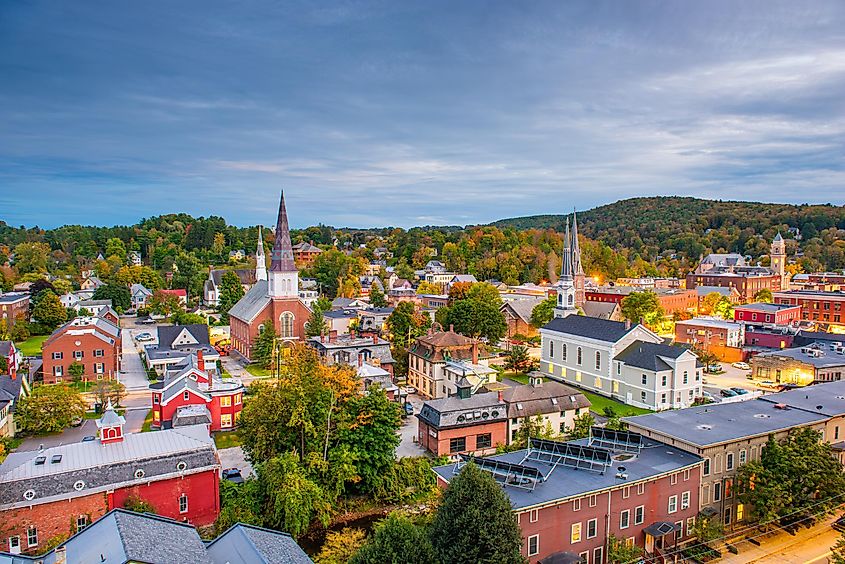
The capital of the State of Vermont, as well as the seat of Washington County, Montpelier, is in many respects a commuter town. It has an official population of just over 8,000 residents but a so-called 'daytime population' in excess of 21,000 due to the large number of jobs based within its boundaries.
One of Montpelier's most popular and enduring tourist attractions is the Vermont Statehouse, which carries the distinction of being the oldest active legislative hall in the country. With its gleaming rotunda and classical columns, the 160-year-old building serves as a monument of municipal pride and inspiration, drawing approximately 150,000 visitors every year. The arts are also well-represented in Montpelier, with its newly-christened Capitol District bringing rotating gallery exhibitions, free concerts and performances, and special cultural events to the city center on a regular basis. Beyond that, Lost Nation Theater, The Savoy Theater, the Vermont Historical Society Museum, and the Montpelier Chamber Orchestra are all located in the heart of the city and serve to nourish the souls of all who patronize them.
Vermont's capital city has gone to great lengths to maintain its small-town feel, even going so far as to shun the encroachment of big box stores and national commercial chains in favor of local independent businesses. The result of this effort is a resilient downtown core with a strong internal economy, featuring shops positively exuding personality, such as Cobbler's Leather Shoppe, J. Langdon Antiques, Althea's Attic Boutique, The Book Garden, Astrobridge Artistry, and Grian Herbs Apothecary.
Then, there is the town's perennial draw for winter sporting types. Because it is so close to Vermont's Green Mountain Range, when snow comes to Montpelier, it transforms the area into a skier's paradise. The neighboring resorts of Sugarbush, Stowe Mountain, and Bolton Valley are all considered top-notch ski facilities, each perched atop world-class slopes.
In the minds of many people, the southern states hold a near-monopoly on the most vibrant vacation spots in America. This is not the reality of the situation, though. As the eight communities profiled above clearly illustrate, there are a multitude of small communities in the north full of passion, zest, and character. From the historical shores of Nantucket to the artistic enclaves of Stillwater to the snow-capped ski hills of Montpelier, spending time getting to know any of these northern towns will rejuvenate any person who makes the wise choice to visit.
